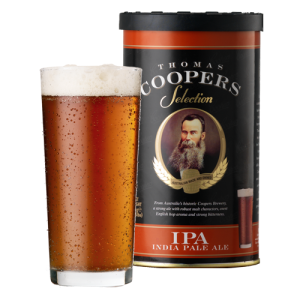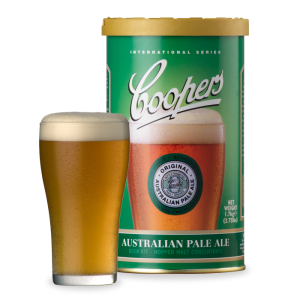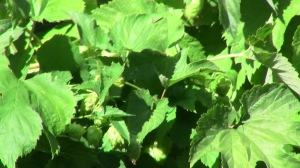Frequently I get asked how to make an IPA using a beer kit. Coopers Brewery has generously provided the recipe below. This recipe will produce an IPA style traditionally brewed in the UK. To get even more hop flavor and aroma I would try the
Hop Slam IPA. A PDF of the Hop Slam IPA can also be download and printed out
Hop Slam IPA recipe.
Authentic IPA (20 liters)
India Pale Ale was shipped from England to India for the British troops. To withstand the journey, IPA needed to be a heavily hopped, malty brew with high levels of alcohol.
Coopers Brewmaster Selection IPA recipe can be easily modified to make an authentic IPA like those produced in the early 1800s. Beware, as this recipe produces a beer with serious bitterness, sure to please the “Hopheads”!
Ingredients

India Pale Ale
• 1.7kg Thomas Coopers IPA
• 1kg Coopers Light Dry Malt
• 500g Sugar or Dextrose
Method
1. Place the Coopers Light Dry Malt into a drained, sanitized fermenter.
2. Add 2 liters of hot water.
3. Immediately pick the fermenter up and swirl the contents until dissolved (approx 15 secs).
4. Mix in the balance of ingredients then top up the fermenter with cool water to the 20 liter mark.
5. Pitch the yeast and seal.
BREW
Strong Beers are made from High Gravity Brews. The yeast may have difficulty in fully fermenting a High Gravity Brew.
A few ways we can encourage a strong fermentation process:
• Stir vigorously prior to pitching yeast
• Add and extra yeast sachet and/or
• Make a yeast starter.
To avoid the risk of over-carbonation (glass bottles may explode). Only bottle your brew when the fermentation process is complete. Fermentation is complete when the density of the brew remains constant over 2 days. he use of a hydrometer is recommended to check the specific gravity (density) of your brew.
BOTTLE
Bottles need to be primed so that secondary fermentation (producing the gas in the bottle) can take place.
We recommend the use of PET bottles or reusable glass bottles designed for storing beer.
Priming
Add carbonation drops at the rate of 1 per 330ml/375ml bottle and 2 per 740ml/750ml bottle. Sugar or dextrose may be used at the rate of 8g per liter (approximately 6g of sugar to a level metric teaspoon).
Store the bottles out of direct sunlight at 18°C or above for at least 1 week while secondary fermentation occurs. Your beer can be consumed after 2 weeks.
Bottles may be stored (conditioned) for long periods of time (3 months or more). Conditioning should improve flavor, reduce the size of the bubbles and make the yeast sediment more compacted.
ENJOY
Naturally conditioned Strong Brews, being higher in alcohol and fuller of body, benefit from extended conditioning at or above 18°C.
You may choose to serve it cloudy or bright. Try one less chilled to get the benefits of the extra aromas and flavor.
Remember these brews are very high in alcohol and are not intended to be consumed as a session beer.






























